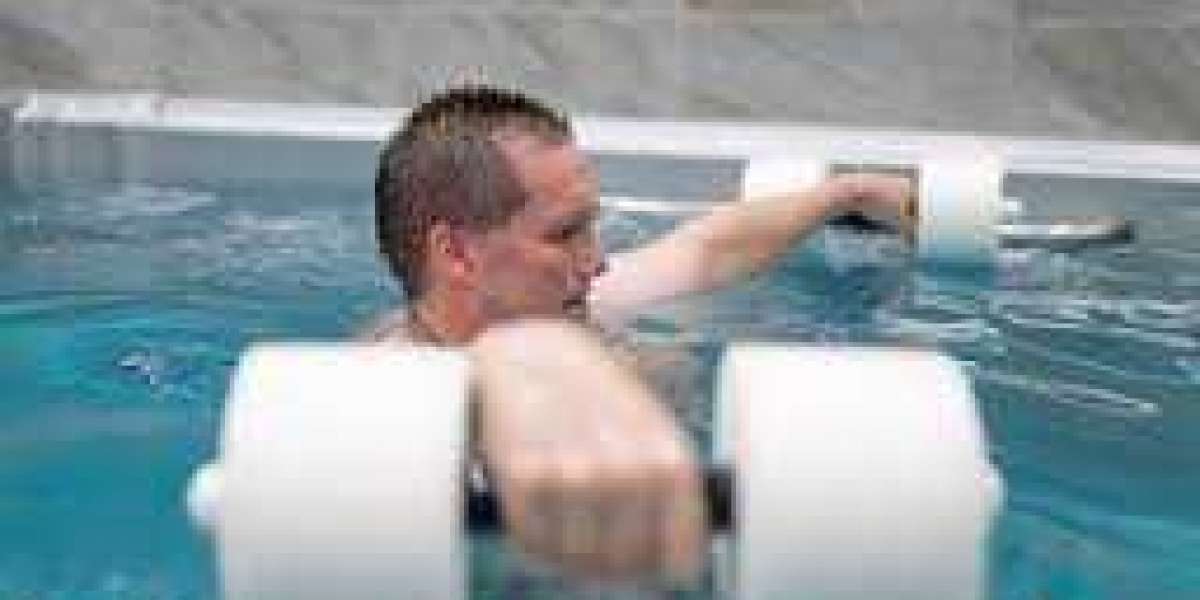Hydrotherapy, also known as aquatic therapy, has been used for centuries to treat a variety of ailments, from musculoskeletal conditions to neurological disorders. The therapeutic use of water for healing dates back to ancient civilizations, where warm baths and cold water treatments were considered essential to health. Today, Hydrotherapy services in Toronto continue to thrive as a highly effective and versatile treatment for promoting recovery and wellness.
Whether used in rehabilitation after an injury, managing chronic pain, or improving overall physical and mental well-being, hydrotherapy offers unique benefits that other forms of therapy cannot replicate. This article will explore how hydrotherapy works, its various techniques, and the significant ways it promotes both physical and mental recovery.
What is Hydrotherapy?
Hydrotherapy refers to the use of water in the treatment of various health conditions. It encompasses a range of treatments, such as warm baths, underwater exercises, hot and cold contrasts, whirlpool therapy, and even specialized water immersion equipment like underwater treadmills. The primary principle behind hydrotherapy is utilizing the physical properties of water—buoyancy, resistance, and temperature—to provide therapeutic effects.
There are two main categories of hydrotherapy:
Passive hydrotherapy: Where the patient remains still and the therapeutic properties of water (temperature and buoyancy) are utilized to aid in healing. This includes hot or cold baths and water immersion.
Active hydrotherapy: Involves exercises performed in water to promote strength, flexibility, and mobility. These may include swimming, water aerobics, or specialized exercises in a pool with varying levels of resistance.
How Hydrotherapy Works: The Science Behind It
Water offers a unique environment for rehabilitation due to its physical properties. These properties significantly impact both the healing process and the recovery experience. Let’s break down some of the key mechanisms by which hydrotherapy helps with recovery and wellness:
1. Buoyancy: Reducing Joint Stress
One of the most significant benefits of hydrotherapy is buoyancy, which refers to the upward force that water exerts on the body. Buoyancy helps reduce the weight placed on the joints and soft tissues, which makes movement easier and less painful for individuals with joint pain or injuries.
For example, when a person with knee arthritis stands in waist-deep water, the buoyancy of the water supports a portion of their body weight, reducing the load on the affected joints. This allows them to perform movements that might otherwise be too painful on land. Buoyancy also helps individuals with limited mobility regain movement without the risk of injury or strain.
2. Hydrostatic Pressure: Enhancing Circulation and Reducing Swelling
Water exerts hydrostatic pressure on the body when submerged. This pressure helps promote blood circulation and reduces swelling, making it particularly beneficial for individuals recovering from surgery or injury. The compression from the water improves venous return and helps fluids move from the extremities back toward the core, promoting healing and reducing inflammation.
For example, for a person recovering from ankle surgery, submerging the leg in water can help decrease swelling and improve blood flow, which speeds up the healing process and reduces the likelihood of complications such as deep vein thrombosis (DVT).
3. Resistance: Strengthening Muscles Without the Risk of Strain
Water is denser than air, so it naturally provides resistance. This resistance is particularly beneficial for building strength and endurance while minimizing the risk of strain or injury. In water, movements are slowed down due to the resistance, which forces the muscles to work harder. The added resistance also allows for a full range of motion, which can help patients regain mobility more efficiently.
Water resistance makes hydrotherapy an ideal treatment for individuals recovering from sports injuries, fractures, or surgeries. For example, a person recovering from shoulder surgery can perform a series of controlled arm movements in water, gradually increasing the resistance, which helps to build strength and flexibility in a safe, low-impact environment.
4. Temperature Therapy: Managing Pain and Enhancing Relaxation
Temperature plays a critical role in hydrotherapy. Both heat and cold can have therapeutic benefits when applied to the body. Hot water relaxes muscles, reduces pain, and increases blood flow, while cold water can help reduce inflammation and numb painful areas.
Warm water: Often used for muscle relaxation, increasing blood flow, and alleviating stiffness. It can be particularly useful in conditions like arthritis, fibromyalgia, or muscle spasms.
Cold water: Helps reduce inflammation, numb sharp pain, and control swelling. It’s often used in the early stages of an injury or post-surgery to control swelling and reduce pain.
Contrast hydrotherapy (alternating between hot and cold water) is also a popular technique that stimulates circulation, reduces muscle soreness, and promotes faster recovery from injury.
Benefits of Hydrotherapy Services for Recovery and Wellness
Hydrotherapy services can provide numerous physical and psychological benefits. Whether for managing chronic conditions, recovering from surgery, or improving overall fitness, hydrotherapy plays a critical role in recovery and wellness.
1. Pain Management
One of the most immediate benefits of hydrotherapy is pain relief. Warm water’s ability to soothe muscle tension, combined with water's buoyant properties that reduce strain on the joints, makes hydrotherapy an excellent way to manage pain. Whether you’re recovering from a back injury, dealing with chronic arthritis pain, or rehabilitating a recent surgery, hydrotherapy can help you experience significant pain reduction. Many patients report less reliance on pain medications after engaging in regular hydrotherapy sessions.
2. Accelerated Recovery Post-Surgery or Injury
After surgery, the body needs time to heal, and recovery often involves significant discomfort. Hydrotherapy speeds up this process by promoting circulation, reducing swelling, and encouraging gentle movement. For patients recovering from knee replacements, hip surgeries, or even fractures, hydrotherapy helps restore mobility and strength in a safe, controlled environment. The buoyancy of the water allows patients to begin exercising sooner than they would be able to on land, which shortens recovery times and prevents complications such as muscle atrophy.
3. Improved Flexibility and Mobility
Water's resistance and buoyancy provide a unique setting for improving flexibility and joint mobility. Gentle stretching exercises and low-impact movements performed in water can help increase the range of motion and reduce stiffness. This is especially helpful for individuals with conditions like arthritis, fibromyalgia, or after a long period of immobility.
Hydrotherapy offers a safe and effective way to regain movement without overexerting the body or risking further injury. For instance, after a knee replacement, patients may be able to walk or even jog in water much sooner than they would on land, helping to rebuild flexibility and strength.
4. Mental Health and Relaxation
Hydrotherapy also has significant mental health benefits. The soothing nature of water, combined with the physical benefits of the therapy, can help reduce stress and anxiety. Submersion in warm water has been shown to stimulate the parasympathetic nervous system (responsible for relaxation), leading to a reduction in stress hormones and an increase in feelings of calm.
Aquatic environments also encourage mindfulness and focus, which can promote emotional well-being. Many individuals find that after a hydrotherapy session, they experience reduced tension and improved mood, which contributes to overall wellness.
5. Improved Balance and Coordination
For older adults or those with neurological conditions, hydrotherapy is a highly effective tool for improving balance and coordination. The water provides a safe environment in which patients can practice balance exercises without the fear of falling. Buoyancy allows for more controlled movements and offers a cushion against the risk of injury.
For individuals with conditions such as multiple sclerosis, Parkinson’s disease, or stroke recovery, hydrotherapy can play a pivotal role in restoring physical function and promoting independence.
Popular Hydrotherapy Techniques
Various hydrotherapy techniques are used depending on the condition being treated. Some common forms include:
- Aquatic Exercise: Engaging in low-impact exercises in the pool, which promote cardiovascular health, strength, and flexibility.
- Whirlpool Therapy: Using a whirlpool bath to provide a massaging effect, which reduces muscle tension and promotes relaxation.
- Cold and Hot Water Immersion: Alternating between hot and cold baths to improve circulation and reduce inflammation.
- Underwater Treadmill Therapy: Walking or running on a treadmill submerged in water, which provides a full-body workout with less strain on the joints.
Conclusion
Hydrotherapy services offer a comprehensive approach to recovery, rehabilitation, and wellness. From its ability to reduce pain and swelling to promoting circulation, strength, and flexibility, the therapeutic properties of water are unmatched in supporting a patient’s healing journey. Whether you’re recovering from surgery, managing chronic pain, or seeking a holistic treatment for stress and anxiety, hydrotherapy can play a crucial role in your overall well-being.
By providing a low-impact, safe, and effective environment for rehabilitation, hydrotherapy not only accelerates recovery but also improves mental health, balance, and quality of life. The versatility of hydrotherapy treatments, combined with its scientifically proven benefits, makes it an essential option for those seeking to improve their physical and mental health. If you are considering rehabilitation options, hydrotherapy should be an important part of your recovery plan.







